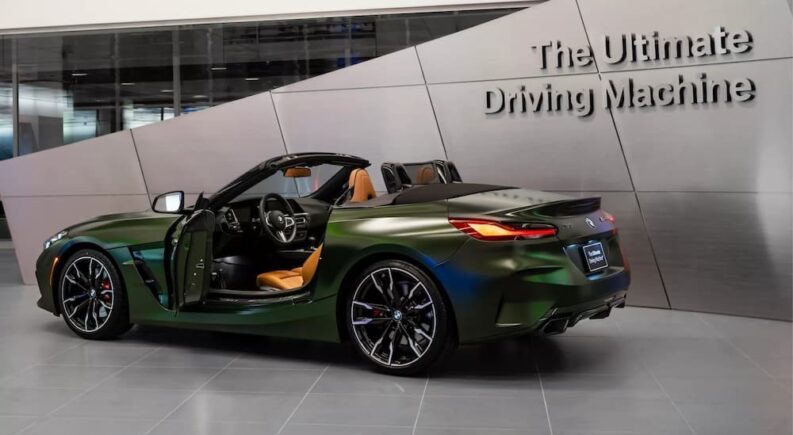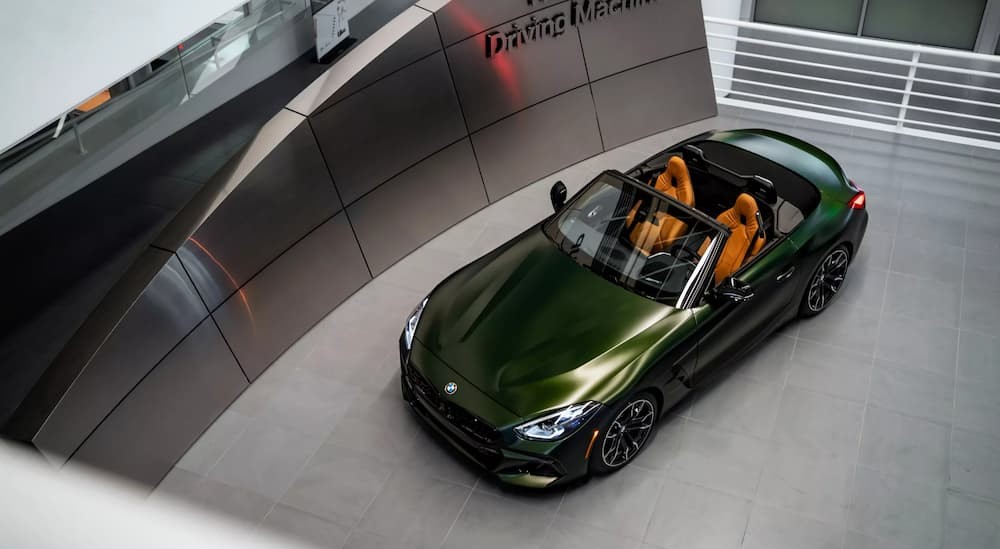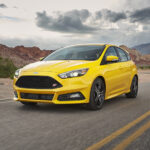With over 60 years of sports car success to its name, drivers can trust BMW to produce a thrilling ride. While the brand’s M Series offerings have helped to expand BMW’s high-performance profile, their homegrown sports cars have captured drivers’ hearts and minds worldwide. BMW now looks to take the leap into the supercar stratosphere with the impending debut of a new prototype based on the Neue Klasse all-electric platform. This isn’t the first time the Bavarian brand has teased a supercar, but all indications are that the concept model could be the first to actually hit the mass market. As we await more news on this tantalizing milestone, we thought it would be a good time to look back on BMW’s history of high performance models.
In order to keep things simple, we’re going to focus on the history of BMW’s pure sports cars and roadsters. While some might argue that BMW’s M Series models deserve a place in this retrospective, allow us to explain our reasoning. There’s no denying the high-performance bona fides of the BMW sub-brand, which sees some of the automaker’s most popular models outfitted with modified engines, lightweight aluminum suspension components, heavy-duty brakes, and the M-exclusive Servotronic electric power steering. That said, models like the M340i, M850i xDrive, and i5 M60 weren’t originally designed with high-performance applications in mind. They might represent a significant improvement over the existing models on which they’re based, but all the upgrades in the world still don’t make BMW’s M Series models dedicated sports cars. We will make an exception for the M1, as this mid-engine sports car was a wholly original creation and the first BMW to bear the M branding. Sure, we’re being a little picky, but BMW’s pure sports cars and roadsters simply set too high of a bar to be mentioned in the same breath as their M Series counterparts.
328 (1936-1940)
Based on the 315 and 319, the BMW 328 was the brand’s first true sports car. Created by an all-star team of BMW greats including BMW motorsport founder Alex von Falkenhausen and future BMW design director Peter Szymanowski, the 328 backed up its lineage with an impressive slate of wins through the late 1930s and early 1940s. The sports car not only took home a class win in the 1938 Mille Miglia, but would return to the podium as the all-around winner for the 1940 contest. Achieving an average speed of 103 mph during the 1940 race, the 328 became a legend in the rapidly growing world of motorsport. The 328 would notch 100 class wins in its first year on the market thanks in large part to its six-cylinder, 79-horsepower engine and its sleek, aerodynamic, and all-aluminum chassis that saw the sports car weigh in at just 1,830 pounds. The 328 borrowed its 1,971 cc engine from the 319, but added a few performance-focused components that helped it to gain an edge at the track. The 328 has stood the test of time and maintained its legacy with some notable wins, including a class title at the 2018 Le Mans Classic.
507 (1956-1959)
The 507 was BMW’s attempt to appeal to a power-hungry American market. Famed importer Max Hoffman, who was also behind such icons as the Mercedes-Benz 300SL, the Porsche 356, and BMW’s own 2002, lobbied BMW management to modify the popular 500-series grand touring platform to create a convertible that would appeal to American drivers. While the 507 was intended as a mid-tier alternative to the pricey Italian, German, and British imports of the time, a limited production run of just 252 units saw the price skyrocket well outside the budget of even some well-heeled drivers. That certainly hasn’t changed over the last 60-plus years, with vintage 507s selling for an average of $2.1 million according to Classic.com.
The 507 boasted BMW’s first-ever V8 engine, not to mention an advanced suspension with anti-roll bars, a live axle, and a parallel double wishbone suspension. With a four-speed manual transmission mated to the 147-horsepower V8, the 507 could speed from zero to 60 mph in 11.1 seconds and hit a top speed of 122 mph. The 507 wasn’t without its drawbacks. BMW fitted the model with an extra-large 29-gallon gas tank that dominated much of the 507’s cargo space, not to mention giving off noxious fuel smell. BMW would address this flaw with the release of the Series II, downsizing the tank to a more reasonable 17 gallons that made for a decidedly more pleasant ride.
M1 (1978-1981)
When you’re looking to build a sports car that can compete with Porsche in the Group 5 racing division, getting a little input from Lamborghini never hurts. BMW teamed up with the Italian automaker to craft the M1, though bankruptcy would see Lamborghini dropped out of the project before work truly got underway. Despite this departure, the M1 would boast a distinctly Lambo-inspired design, with an iconic wedge shape that spoke to both its Italian influence and late 70s heritage. The M1 is notable for its long list of firsts. Not only was the sports car the first mass-produced mid-engine BMW, it was also the coming out party for the brand’s M division, though it also nearly spelled its doom.
The M1 was a masterful bit of automotive engineering, but was less successful from a business perspective. The M division was thrown into financial disarray over the production of the M1, thanks in large part to the fact that less than 400 units ended up making it onto the road. The M1 might have gone down as a regrettable chapter in the brand’s history if not for its lasting influence. The M1 would inspire such models as the M5 and M6. In fact, under the hood of the original E28 M5 was the same engine that powered the M1. More importantly, the M1 helped establish the M divisions as a force to be reckoned with in the world of high-performance cars.
Z (1989-Present)
BMW’s Z line of roadsters were first introduced in 1989 with the debut of the Z1. Based on the E30 3 Series platform, the 168-horsepower Z1 was a quirky little roadster with a few neat tricks up its sleeve. Not only could all of the body panels be removed to cut a little weight, the Z1’s doors also stowed away directly into the door sills.
The short-lived Z1 was on the market for just three years and limited to 8,000 units, but would be followed by BMW’s first mass-market roadster in the Z3. The Z3 rose to fame as the go-to ride of James Bond in 1995’s Goldeneye. A coupe version was also made, but it was largely derided for the unusual styling that saw some critics label it as BMW’s “clown shoe.”
In 2000 BMW introduced a Henrik Fisker-designed Z07 concept intended to honor the legacy of the 507, but a strong critical response saw the Z07-inspired Z8 enter limited production. The Z8 would give way to three successive generations of the Z4, which has been in nearly continuous production since 2003. Built with a larger, stiffer chassis than the Z8, the Z4 would go on to gain a retractable hardtop as the second-generation model hit the market in 2009. The Z Series took a brief hiatus in 2016, but burst back onto the scene in 2018 with an all-new platform that it shares with the Toyota Supra.
I8 (2014-2020)
Electrification and high-performance go hand-in-hand, with the hybrid approach giving a nice little jolt to any vehicle’s performance resume. BMW was relatively early to the game, debuting the Concept Vision EfficientDynamics in 2013. The concept would enjoy a warm reception, leading BMW to market a full production model for the 2015 model year. A turbocharged, 228-horsepower engine teamed up with a 129-horsepower electric motor to bestow the i8 with a combined 357 horses and 420 lb-ft of torque to play with. That gave the hybrid a zero-to-60-mph time of 4.2 seconds, which, combined with the sports car’s 27 MPG (or 69 MPGe when driven in all-electric mode), represented an impressive fusion of performance and efficiency.
The i8 would become only the second mid-engine model in BMW’s long history, following in the footsteps of the M1 to provide drivers with a decidedly sporty design. Butterfly doors added that high-performance touch, but the relatively small 1.5L I-3 engine presented some issues when it came to the i8 sounding the part. BMW solved this by adding a little faux engine noise to the equation, giving the i8 the growl consumers had come to expect from their $150,000 sports cars.
The First BMW Supercar?
Some might be surprised to learn that BMW doesn’t currently offer a true supercar. While the German brand is synonymous with luxury and performance, BMW hasn’t put a huge emphasis on the sort of unhinged automotive creations that typically earn the supercar label. Critics would argue that the i8 deserves the title of BMW’s first supercar, but that’s still a matter of debate in the motorhead community. While it boasts many of the attributes that typically denote a supercar, including butterfly doors, a zero-to-60-mph time of 4.2 seconds, and a $143,400 price tag, some take issue with the designation. A top speed of 155 mph, finicky handling, and a noticeable bit of throttle lag are some of the common complaints with detractors, suggesting that the i8 is more of a contemporary of models like mid-tier Porsche 911 than a Bugattti or McLaren.
BMW has rolled out a number of intriguing supercar prototypes over the last few decades, but none have made it close to the production floor. The ill-fated i16 came close in 2020, but was ultimately nixed by a budget-conscious BMW board. Then came the Neue Klasse platform. This all-electric architecture has underpinned some of the most intriguing BMW concept models in recent memory, including the BMW Vision Neue Klasse. With the ability to support a wide range of electric motors, up to 1,341 horsepower, and both rear and front-wheel drive configurations, the Neue Klasse platform is tailor-made for the sort of supercar that BMW fans have long anticipated.
That anticipation might soon come to an end, as a suspiciously super-looking Neue Klasse prototype has recently been spotted in public. The two-door model has been wrapped in that Captcha-looking camouflage common to so many prototypes, but there’s still plenty we can discern from the leaked spy shots. The supercar prototype looks to have a sporty shark nose and a sloping roofline, not to mention the minimalist aesthetic common to many of the Neue Klasse prototypes. The supposed supercar does sit a little higher than your average high-performance model, but that’s all in keeping with BMW’s iconoclastic approach to the segment in general.
Design aside, it’s the prototype’s powertrain that will decide if it truly earns the supercar designation. Again, details are hard to come by, but we do know that the Neue Klasse architecture opens up the door to some intriguing possibilities. The prototype’s 1,341- horsepower potential certainly sets it up for success, but only time will tell how far BMW decides to push the envelope in terms of performance. One thing for sure is that this is about as close as BMW has come to following through on its supercar promises in recent memory. We’d be surprised if the Neue Klasse-based project fizzles out like some of its predecessors.
From the original 328 and 507 to more modern marvels like the M1, Z series, and i8, BMW has proved itself adept when it comes to pushing the performance envelope. The rumors of a forthcoming supercar are sure to make longtime BMW fans sit up and take notice, especially with all the possibilities presented by the Neue Klasse all-electric platform. With the ability to top 1,000 horsepower and the type of instant acceleration that only an EV can provide, the untitled BMW supercar is sure to provide plenty of edge-of-your-seat thrills. Sadly, most drivers will probably have to admire the BMW supercar from afar. With MSRP ranging from $250,000 to $500,000, modern supercars are typically well outside the budget of the average driver. That’s not to say they can’t be appreciated from afar, but the closest Johnny Petrol will get to climbing behind the wheel will probably be in the form of the latest Forza game.





